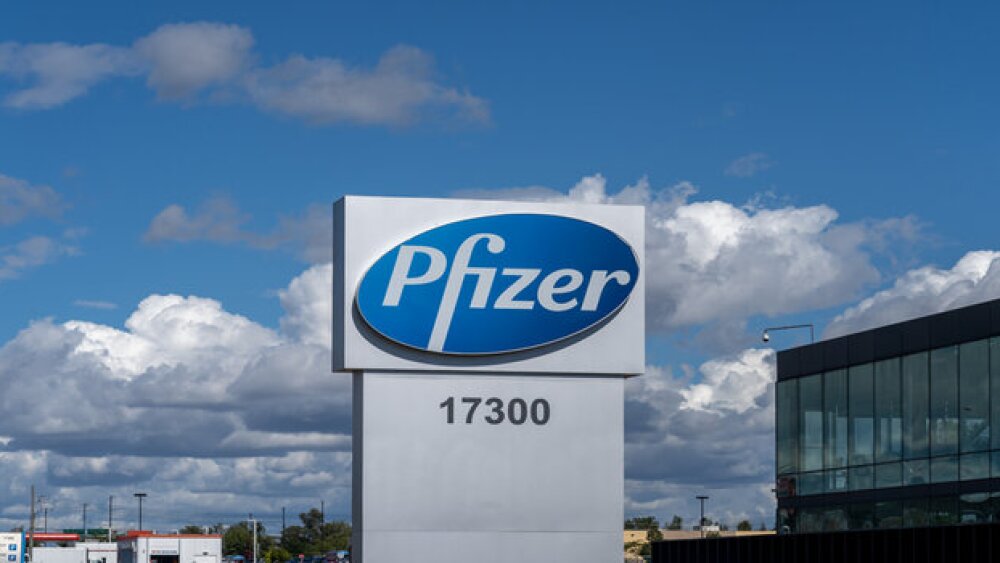Analysts expect the partners’ first-mover advantage, clinical data and existing presence in lung disease to translate into significant sales, with GlobalData predicting Dupixent’s COPD revenues will top $6.5 billion within 10 years.
Regeneron and Sanofi won FDA approval for Dupixent in COPD in late September 2024. The approval of the antibody in a seventh indication marked the first time the regulator had authorized a biologic in COPD. The FDA approved Dupixent on the strength of clinical data showing the drug reduces exacerbations in adults on maximal standard-of-care inhaled therapy.
The authorization positions Regeneron and Sanofi to target an estimated 300,000 adults in the U.S. who have an eosinophilic phenotype and inadequately controlled COPD. As a result of this expanded population, GlobalData calculates that in 2033 the partners can add $6.57 billion to Dupixent sales, which totaled $11.59 billion across the other six indications in 2023.
Other groups have made smaller forecasts. Sanofi has said it expects Dupixent, which targets IL-4 and IL-13, and anti-IL-33 antibody itepekimab to generate combined peak annual COPD sales of 5 billion euros ($5.5 billion). BMO Capital Markets analysts, writing in a note about Regeneron, predicted a peak yearly revenue contribution for Dupixent in COPD of $2.5 billion. Still, all the forecasts point to Dupixent being a major drug in the COPD space.
GlobalData’s prediction that the antibody will dominate the COPD biologics market is based on talks with experts, as Asiyah Nawab, pharma analyst at the data and analytics company, said in a statement. “The key opinion leaders interviewed by GlobalData have shared optimistic views on Dupixent, noting that the data presented in the clinical trials brings a great advantage to the asset and to the COPD space, perhaps even over other biologics in the COPD pipeline.”
AstraZeneca, GSK and Roche Ready Rivals
Dupixent is the first biologic approved in COPD because other candidates stumbled during development. AstraZeneca dropped plans to seek approval for its IL-5-targeting drug Fasenra in 2018 in response to a Phase III failure. Around the same time, the FDA knocked back GSK’s request to approve Nucala, another anti-IL-5 antibody, in COPD.
The setbacks allowed Regeneron and Sanofi to come from behind and secure a first-mover advantage in the COPD biologic market. Neither AstraZeneca or GSK gave up on developing biologics in COPD, though, and both companies could launch rivals to Dupixent in the setting.
GSK reported Phase III data on Nucala in COPD in September 2024, linking treatment with the antibody to a reduction in the annual rate of moderate or severe exacerbations. The topline release lacked data to inform a cross-trial comparison against Dupixent. GSK stated at the time that it will share the results at a scientific congress, adding that the data will inform ongoing talks with regulatory authorities.
While GSK persisted with Nucala after its setback, AstraZeneca switched its attention from Fasenra to the anti-IL-33 antibody tozorakimab after the former fell short in COPD. The drugmaker is aiming to complete multiple Phase III trials of tozorakimab in COPD in 2026.
Yet another potential competitor in the space is Roche’s anti-ST2 antibody astegolimab. While a Phase IIa trial found astegolimab failed to significantly cut the exacerbation rate in moderate to very severe COPD, the study did hint at improvements in overall health, daily life and perceived well-being. Roche started two Phase III trials that have primary completion dates in 2025 and 2027.
Dupixent Launch Activities Get Going
How much of a head start Dupixent will have over the competition remains to be seen, but Regeneron and Sanofi will use whatever lead time they have to establish a market presence in COPD. It’s a market that is a little different from the settings in which Dupixent has succeeded to date, with COPD affecting an older population than other Dupixent indications. As a result, more patients will fall into Medicare Part D.
Talking at a Morgan Stanley conference in September 2024, Ryan Crowe, SVP of investor relations and strategic analysis at Regeneron, said targeting the older patient population means Dupixent will need to go through the “contracting payer process.” The process can vary in duration, Crowe said, but Regneron was “looking at it in terms of a few months.”
Regeneron and Sanofi have already established other building blocks for a successful launch. The sales force is in place, Crowe said, and some pulmonologists will already be familiar with the drug from its use in asthma. As the partners get their “formulary positions in place,” Crowe said they could “have a very meaningful and exciting launch on our hands.”






